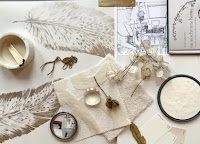All-white kitchens have had a solid run, but they’ve become predictable and a kitchen cliché. Today’s homeowners want warmth and personality. Two-tone kitchens—mixing painted uppers with wood or darker lowers—or colorful kitchen islands add dimension and character without a full remodel. White is still classic, but combining it with natural or wood tones and nature-inspired hues can keep a kitchen feeling fresh, modern and far from cookie-cutter.
Forty-one percent of homeowners regret their color choice for the kitchen, according to a survey from Moneywise.(link is external) They may not have factored in the direction of the kitchen and whether it’s north-, south-, east- or west-facing, says Jen Nash, head of design at Magnet Kitchens(link is external). She believes the orientation of the kitchen is a big factor in choosing the “right” color for your space.
North-Facing Kitchens: Warm Neutrals
“North-facing kitchens tend to lack sunlight, especially in comparison to south-facing kitchens,” Nash says. “A lack of sunlight can, in some cases, leave the kitchen space feeling a little dark and cold and also can make the kitchen look smaller than it actually is.”
She recommends warmer shades of a lighter color—like yellows and creams—for north-facing spaces. “The use of warmer, light colors will make the space appear more welcoming and inviting while also making the space look larger,” Nash says.
South-Facing Kitchens: Experimental
South-facing kitchens tend to get plenty of sunlight and natural light flowing in during the day. As such, color options are more plentiful, Nash says.
“Pale, soft tones work extremely well in south-facing kitchens, as they make the space look extremely airy and spacious,” she says. She also recommends considering whites and pastel colors, such as pale yellows and blues. South-facing kitchens also allow for some experimentation with darker colors: accenting a kitchen with dark greens or blues can add a sense of depth and warmth, Nash says.
“While it may be tempting to use dark shades as a primary color in your South-facing kitchen, they are extremely bold and, if used excessively, can completely overwhelm a space regardless of the amount of natural light available,” she says. “With this in mind, when using a dark color, be sure to use it in moderation.”
East-Facing Kitchen: Light Tones
East-facing kitchens tend to receive plenty of natural light in the morning, but as the day goes on, the kitchen space can become dark. Nash recommends opting for colors that will maintain a level of brightness throughout the day but also help balance the intensity of sunlight, particularly in the morning.
Soft shades of tans and beiges can “work extremely well in east-facing kitchens, as they create a warm ambience and work well with changing light throughout the day,” she says. Nash also recommends experimenting with light shades of green, blue and possibly even purple. “Such color choices complement the natural morning light and also help to maintain a bright, airy aesthetic throughout the day as the natural light disappears,” she says.
West-Facing Kitchen: Color Balance
West-facing kitchens tend to receive more natural light in the early evening as the sun begins to set, which can offer up a warm golden tone of lighting within the kitchen space.
“When choosing a color to complement this tone of lighting, you want to make sure you don’t overwhelm the space and opt for a shade that is too warm,” Nash says.
She recommends white or a cool-toned gray for west-facing kitchens. “Cool tones, like white and light gray, can balance out the warmth of the ‘golden hour’ lighting and create a very welcoming, cozy atmosphere without completely overwhelming the space,” she says.





